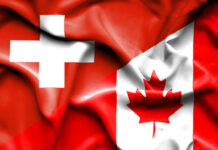Markets
Yesterday, the (EMU) PMI’s were the main eco story for trading. Both manufacturing (48.8 from 47.8) and services (50.7 from 50.2) beat expectations, raising the composite PMI to 50.2, the first reading north of the boom-or-bust level since June last year. Improvement was supported by rising confidence for activity in the next 12 months. This also caused companies to keep hiring. Rises of input prices are slowing amongst others due to easing pressure from energy prices and reduced distortions of supply chains. Still, output prices continue to rise at an elevated pace. The combination of a better activity with high output prices supports CB guidance (including from ECB) to continue tightening policy. In line with recent market reaction function, an uptick in EMU yields to rise was unconvincing and short-lived. This also applied to a (slightly) better than expect US PMI later (composite 46.6 from 45.0). A brief spike in US yields almost immediately attracted bond buyers to step in. The move more or less coincided with headlines that the US and German agreed to supply tanks to Ukraine. This is seen as a potential important development for the conflict, but the direct link with global markets is not that evident. Whatever the reason, markets returned to pattern of a equities capturing a better bid, easing global bond yields and the dollar declining from the intraday top. German yields lost between 6.2 bps (30-y) and 5.1 bps (10-y). US yields eased 1.7 bps (2-y) to 7.6 bps (10-y). US equities reversed opening losses to close mixed (S&P 500 -0.07%). In a sell-on upticks pattern, DXY closed at 101.92 (top 102.43). EUR/USD kept its gradual, but protracted uptrend to close at 1.0887. Sterling underperformed with EUR/GBP again closing north of 0.88(27). Among the CE currencies, the forint rebounded sharply as the MNB pledged to maintain tight monetary conditions for a prolonged period (EUR/HUF close at 389,35 from 395.4).
Asian equity markets are trading mixed. Treasuries maintain most of yesterday’s gain (US 10-y near 3.45%). The dollar stays in the defensive (DXY 101.85, EUR/USD testing 1.09, with USD/JPY slightly outperforming at 130.35). Later, German IFO business confidence is seen in line with yesterday’s PMI’s (business climate seen rising from 88.6 to 90.3). The Bank of Canada is expected to raise its policy rate by 25 bps to 4.50%. Markets look out for governor Mecklem to lay the groundwork for a pause. On EMU and US interest rate markets, investors stay reluctant to comply with recent hawkish CB guidance. The US 10-y yield still struggles to move a away from the 3.40% support area. The German 10-y yield meets resistance near 2.20%. EUR/USD is nearing ever closer to the 1.0942 resistance.
News Headlines
Australian Q4 CPI topped estimates across the board. Prices surged 1.9% q/q in the final quarter of last year, unexpectedly accelerating from the previous quarter (1.8%). As such, inflation hit a new 32-year high on a yearly basis (7.8%). Core inflation was up 1.7% q/q (6.9% y/y) or 1.6% (5.8%) depending on the gauge. Australia’s central bank (RBA) expected inflation end 2022 in the ballpark of 8%. The RBA at the last meeting lifted policy rates to 3.1% but turned a more balanced by considering economic growth and recognizing the monetary policy time lag. Today’s inflation outcome however suggests it’s not yet time for a tightening pause. Especially high core inflation, rooting from a.o. a strong labour market, is keeping the pressure high. Australian money markets discounted about a 50% chance for another 25 bps in February before the publication. That rose to 75% today. Swap yields shot up 14-20.5 bps, the front end underperforming. The Aussie dollar jumps beyond resistance around 0.705 to AUD/USD 0.71.
Sticking to the subject and continent, inflation in New Zealand also rose faster than expected, though to a lesser extent than in its western neighbour. Price growth in Q4 2022 came in at 1.4% q/q. That’s a little more than the 1.3% but, unlike in Australia, a deceleration from Q3 (2.2%). Non-tradeable CPI, a measure for domestic inflation, was up 1.5% (6.6% y/y) vs 1.7% expected. Inflation is up 7.2% (vs 7.1% expected) y/y, the same as in Q3. The numbers do miss the Reserve Bank of New Zealand’s own forecast. The central bank held a much more hawkish tone at the most recent meeting compared to the RBA. It raised rates by 75 bps to 4.25% and penciled in a 5.5% terminal rate to bring inflation back to target over the medium term. Since the meeting, markets were split between a 50 bps or another jumbo hike at the Feb 22 meeting. Odds have now turned a bit more in favour for the former. The kiwi dollar loses a few ticks this morning, easing from recent highs at NZD/USD 0.6505 to 0.6489.













